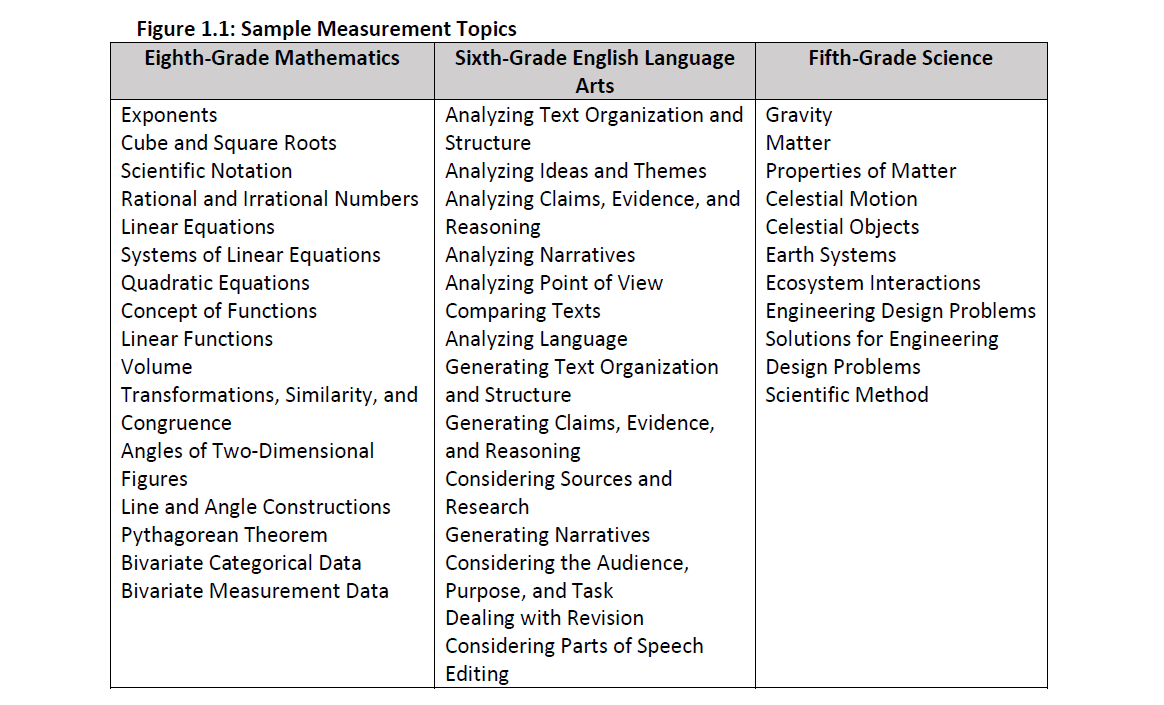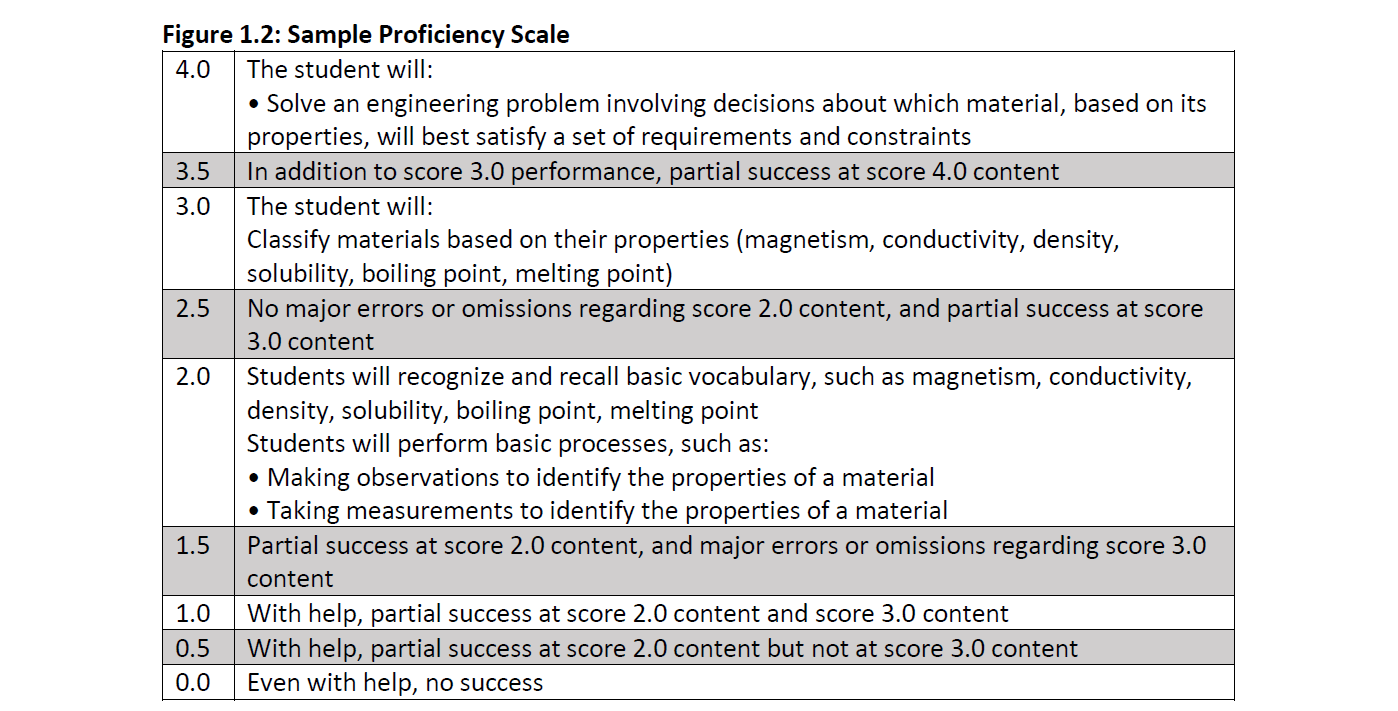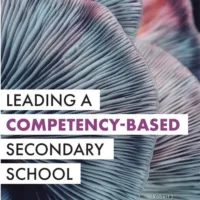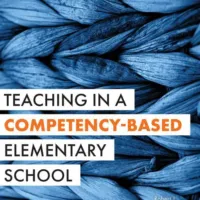At the core of the academy model are measurement topics and proficiency scales. These are described in depth in the books The Handbook for Personalized Competency-Based Education (Marzano, Norford, Finn, and Finn III, 2017), Making Classroom Assessments Reliable and Valid (Marzano, 2018), and The New Art and Science of Classroom Assessment (Marzano, Norford, and Ruyle, 2018). Measurement topics, as the name implies, are those topics that will be assessed by classroom teachers in each subject area and each grade level.
Measurement topics, as the name implies, are those topics that will be assessed by
classroom teachers in each subject area and each grade level. To illustrate, consider figure 1.1.

The use of measurement topics can be a rather significant change for some schools since within the traditional approach teachers commonly don’t keep track of how students are performing on a topic-‐by-‐topic basis.
Every measurement topic should have an accompanying proficiency scale such as the
one in figure 1.2.

Proficiency scales such as the one in figure 1.2 are foundational to assessment and instruction
in every subject and within an academy, including the following:
- Mathematics
- Science
- English language arts
- Social studies
- Technology
- The arts
- Foreign language
- Cognitive analysis skills
- Knowledge application skills
- Metacognitive skills
Every proficiency scale follows the same format. To understand that format it is best to start with the score 3.0 content. This level represents proficiency in whatever topic is the focus of the scale. When students can demonstrate the knowledge and skill at the 3.0 level they are considered proficient. The content at the score 2.0 level represents knowledge that is considered prerequisite to the 3.0 content and will be directly taught to students. The content at the score 4.0 level is that which demonstrates expertise above the proficient level. In some cases, a specific task is articulated at the score 4.0 level, in other cases a general statement is provided, such as: The student demonstrates inferences and applications beyond the score 3.0
level.





